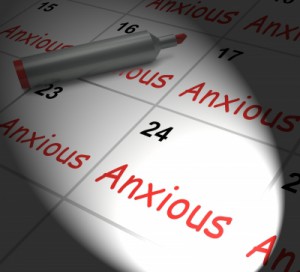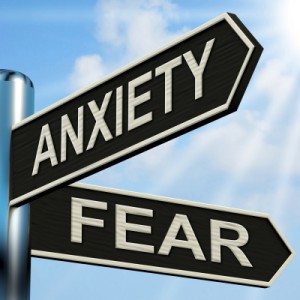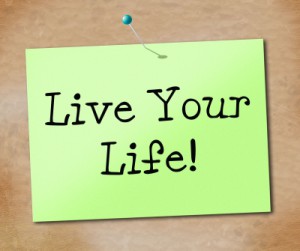A lot of people today are searching the Internet for a guide on how to cure anxiety attacks.
In the beginning of this article, which has only the intention of helping you out with this topic, I would clearly like to point out that I am not a doctor or a medical professional, and that the following information is based on my subjective experience from the time I was searching how to cure anxiety attacks for myself.
Since what I have found helped me actually get to the bottom of this pattern and live a much happier and easier life, I have decided to share it with you.
And if the information that I present here also resonates with you, or helps you in any way, my task is complete.
Not so long ago, I was also experiencing anxiety attacks in my life.
Because of that I was looking forward to just one thing in this world, and that was me going to sleep. See, being unconscious (in a coma like state) was the only time I was truly relaxed and anxiety free.
But the only trouble with that “solution” was that being in a coma-like sleep is about the same as being dead! And that’s no life. I believe that life is meant to be experienced and enjoyed consciously, and not escaped from unconsciously.
This “knocking myself out” technique was not really acceptable for me in the long run so I decided to do something about it.
I knew if I wanted a chance to live and fully experience a happy life, I had to let go of this bondage.
What Is Anxiety?
Merriam-Webster medical dictionary says that anxiety is an abnormal and overwhelming sense of apprehension and fear, often marked by doubt concerning the reality and nature of the threat, and by self-doubt about one’s capacity to cope with it.
Anxiety attacks come in different sizes and shapes, depending on the part of your personality that is being “targeted”. They range from generalized anxiety disorders, phobias, social anxieties, panic disorders etc.
Anxiety disorders affect millions of adults everywhere, 40 million in the United States alone. It has been said that most anxiety disorders begin in childhood, adolescence, and early adulthood. They occur slightly more often in women than in men, and occur with equal frequency among all races.
It could also be argued that anxiety by itself in small amounts is not that detrimental. It is a part of our self-defense mechanism that helps us prepare for survival by activating in-built fight or flight response.
According to Anxiety and Depression Association of America here is the difference between everyday anxiety and anxiety disorder:
Whether it is anxiety or anxiety attack, the truth is that it has become a huge block to our own happiness, joy and progress in life.
Physical and Emotional Symbols of Anxiety
The physical symptoms of anxiety vary depending upon which type of disorder you have. Some of the symptoms you may notice are:
- Your heart rate is going up noticeably
- You start to sweat uncontrollably
- You experience tremor or shaking in your body
- You experience inability to take in deep breaths
- You start to hyperventilate or have feelings of dizziness
There are also emotional symbols of anxiety you may notice like:
- You experience feelings of apprehension or dread
- You start having trouble concentrating
- You experience feeling really tense and uncomfortable
- You can’t stop picturing the worst possible outcome for any given situation
- You get restless
- You feel deep and unbearable fear
- You get extreme wanting to run away and hide
- You lie awake, worried or agitated either about specific problems (like money), or nothing in particular
What is The Root Cause of Anxiety Attacks?
Root cause is always perceived danger or lack of safety that has gotten out of control. In other words, you start to feel really unsafe and insecure, and you start perceiving situations, places, people and events that most of the population doesn’t give that much attention to, as extremely dangerous.
The important thing to notice here is the word perceived. When attack occurs, in reality there is no actual danger or real physical threat present. But our mind convinces us that we are in a situation of life or death.
It’s worst case scenario that we imagine happening in our mind, relating to a possible or imminent future event.
And if it is only in the mind, all we need to do is to take it out of there and we will be free.
Here is the quick technique I used when I was experiencing the beginning of anxiety attack.
Quick Technique to Use When Experiencing Attack
1. Notice the Start of Attack
You already know the symptoms that appear prior or during the attack. Recognizing what is happening is the first step. It allows you the consciousness to start effectively dealing with the issue at hand.
2. Check Yourself on a Scale of Intensity
If you had to gauge what you feel on a scale of intensity from 1-10, where one is small and meaningless anxiety attack and ten is a massive anxiety attack where would you be?
Just allow yourself to feel the answer naturally, don’t try to force it, justify or explain it. Take what you get.
This is your starting value.
3. Welcome and Accept the Feelings
Now, realize that you can’t make the attack stop with brute force. And also remember, that every earlier attack, although it felt extremely unpleasant and disturbing eventually stopped.
This should make it easier for you to welcome and accept the wave of feelings that you are starting to experience in that moment.
Also notice that up to now you were usually saying NO to those feelings. You were resisting them because you wanted them to go away. But has that resistance really made them go away? Of course not, the old saying “what you resist – persist” can be fully applied in this type of situation.
But now it’s time to do something completely different that what you have done so far.
Say YES to the feeling that you gauged on the previous scale. And say YES some more. And some more.
Saying YES allows you to fully recognize and accept the current situation and the feelings you are experiencing. And say YES some more. And some more.
After all, you are experiencing what you are experiencing, you might as well accept and allow it to be.
Continue saying YES while you move to the next step in the list.
4. Breathe
Really, don’t forget to breathe!! I don’t need to tell you how to do that, now don’t I? 🙂
5. Allow the Experience to Unfold
Allow whatever experience you are having in the moment to unfold. Be one with the experience and stop running away from it. There is nowhere to run anyway, and if you are feeling it in the moment, you might as well just give yourself permission to feel it fully!
There is no time like now.
6. Check Yourself on a Scale of Intensity Again
Now, gauge yourself on the same scale of intensity again. Notice if the value has dropped even a minuscule amount. It should have, if you were saying YES to it and you allowed the feelings to be there fully and completely.
And if you noticed an improvement, use that as a pointer that you are really heading in the right direction. Keep up going back to Step 3 until you reach the zero on the scale and the effects of the attack have stopped.
Just by using steps mentioned above, you can help yourself calm down during anxiety attacks, no matter how severe they get. And with practice it will get easier and quicker too! You can actually let all this energy go, and never have it disturb you again.
The more of the feelings you manage to let go, the easier and more relaxed you start to feel.
Do this continually when you experience anxiety attack, and you will continually feel lighter and safer.
Additional recommendations
There are also some other, more general recommendations that could help in reducing anxiety, that include:
- Reducing intake of caffeine and tea
- Exercising regularly
- Eating in a healthier way
- Having a regular sleep pattern
- Seeking support from others
- Avoiding alcohol, cannabis
But, if you are really serious about dealing with this issue, and you have decided that you want to be done with anxiety, you can try out an online course that helped me in treating my anxiety attacks, quickly and efficiently.
I have already written a review about it in one of my earlier posts and that you can check out and read here.
Conclusion
Use any means necessary to start dealing with the anxiety. If you leave it unchecked it will only keep you from living a fulfilling life, and that is really not a fun way to live.
Also, if you have a preferred way or technique of dealing with anxiety attacks please comment below. We need to spread the word and ensure that we eliminate this dis-ease once and for all.
We all deserve to live a happy and fulfilling lives!
Until next time,
Sinisa
Images courtesy of Stuart Miles at FreeDigitalPhotos.net







Hi Sinisa,
I find this technique very simple and easy to use so I will for sure recommend it to my friends… There is so much fear and panic around nowadays, seems even more than ever before, so we need all the techniques we can get!
I mostly use Reiki treatments for myself, and that helps me not only with anxiety but also in improving my entire well being 🙂
Hello again Matty 🙂
You are right, it looks like the focus is always on the negative. You cannot even open the news without being bombarded with negativity, and if it’s not happening in your own country, then from somewhere else in the world.
I guess we are conditioned to respond to negativity, we somehow (in a really bizarre way) find negativity much more interesting than peace, love and optimism.
Crazy world we live in…
And you are of course right, we need to use everything we can get to start changing our lives. I love reiki too, as you can see I offer distance Reiki energy healings!
Anyway I just want to say that I appreciate your following and commenting 😉
Take care,
S.